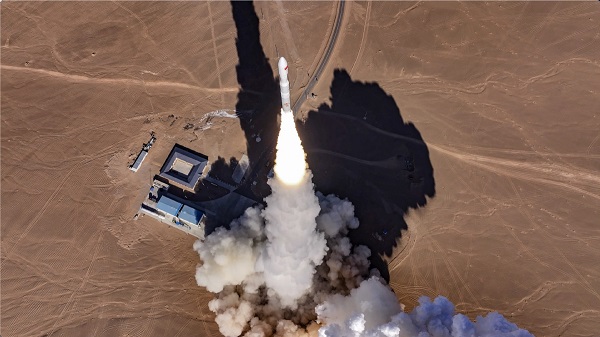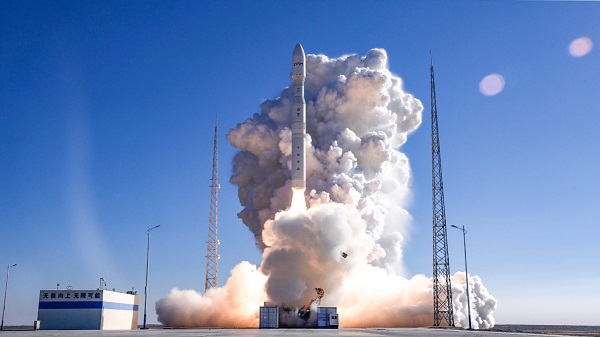CAS Space launches five satellites with Kinetica 1 Y3 rocket

CAS Space conducts the third flight of its Kinetica 1 rocket model on Tuesday. [Photo/chinadaily.com.cn]
CAS Space, a Beijing-based rocket maker owned by the Chinese Academy of Sciences, conducted the third flight of its Kinetica 1 rocket model, formerly known as ZK 1A, on Tuesday.
The Kinetica 1 Y3 rocket lifted off at 12:03 pm from the Jiuquan Satellite Launch Center in northwestern China and then placed five satellites into their preset orbit, the company said in a news release.
The "Y3" in the designation code means it was the third in the rocket fleet.
The Kinetica 1 type conducted its debut flight at the Jiuquan center in July 2022, becoming the country's largest and most powerful solid-propellant rocket by that time. Its second launch took place in June 2023 and transported 26 satellites into space, setting a national record for the most spacecraft launched by a single rocket so far.
The rocket model has a length of 30 meters, a diameter of 2.65 meters, and a liftoff weight of 135 metric tons. It is capable of sending satellites with a combined weight of 1.5 tons to a typical sun-synchronous orbit about 500 kilometers above Earth.
By now, The Kinetica 1 has deployed 37 satellites in space, boasting a 100-percent success rate.
CAS Space has begun to develop a new rocket, Kinetica 2, and plans to conduct the new type's maiden flight in 2025.

CAS Space conducts the third flight of its Kinetica 1 rocket model on Tuesday. [Photo/chinadaily.com.cn]
All of the five satellites launched on Tuesday were designed and built by Minospace, a Beijing-headquartered private startup.
The Taijing 2B is an experimental satellite tasked with monitoring vegetative cover and atmospheric elements. The Taijing 2D is also an experimental satellite for space environmental detection operations.
Taijing 1C and Taijing 3B are high-resolution remote-sensing satellites to take images of designated areas on Earth.
The most remarkable in the group, the Taijing 4C is a plate-shaped radar satellite equipped with a Ku-band synthetic aperture radar. It can service a wide range of businesses such as marine target identification, disaster monitoring, environmental survey, resources mapping, and agricultural yield estimation.
All rights reserved. Presented by China Daily









